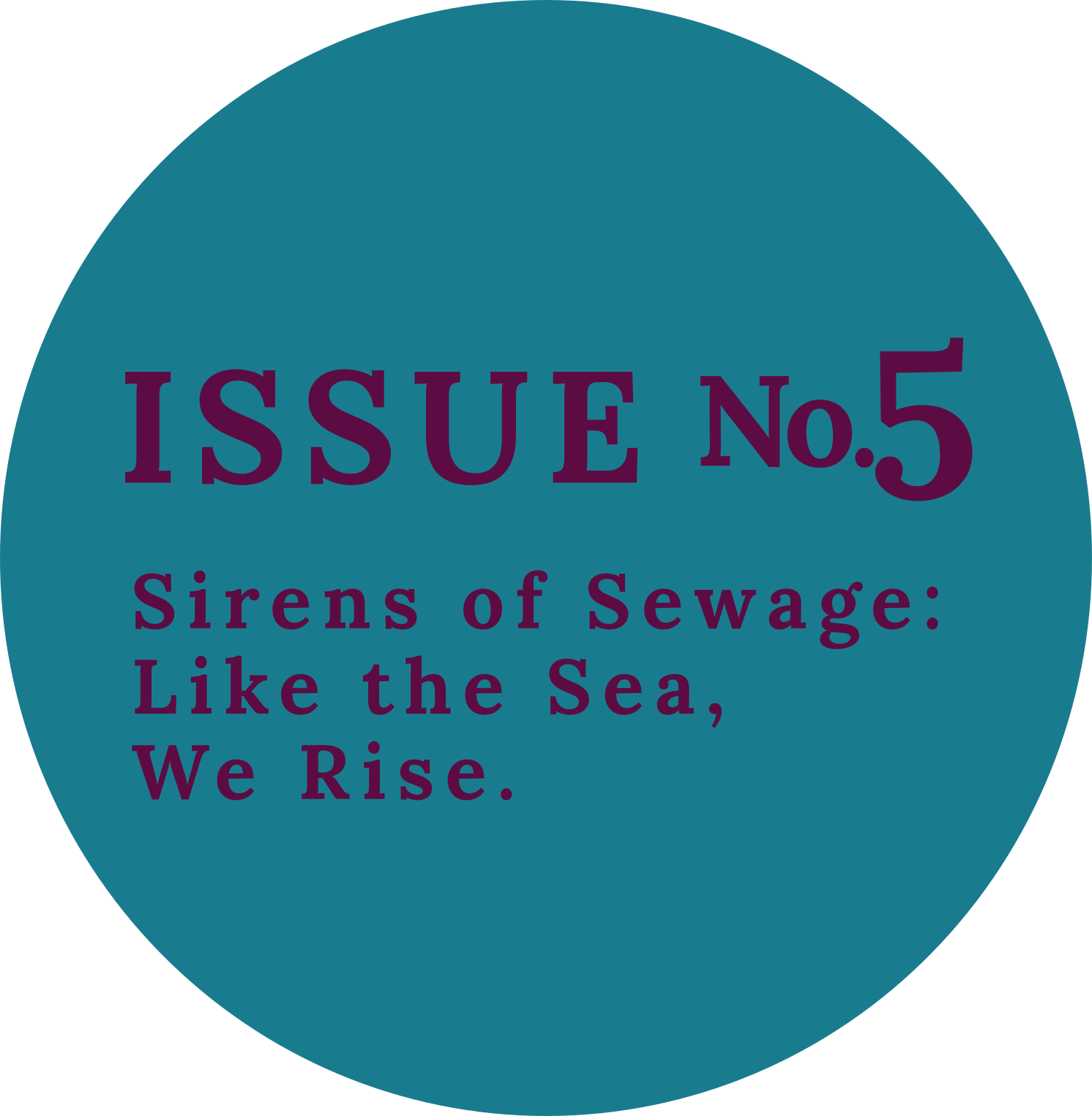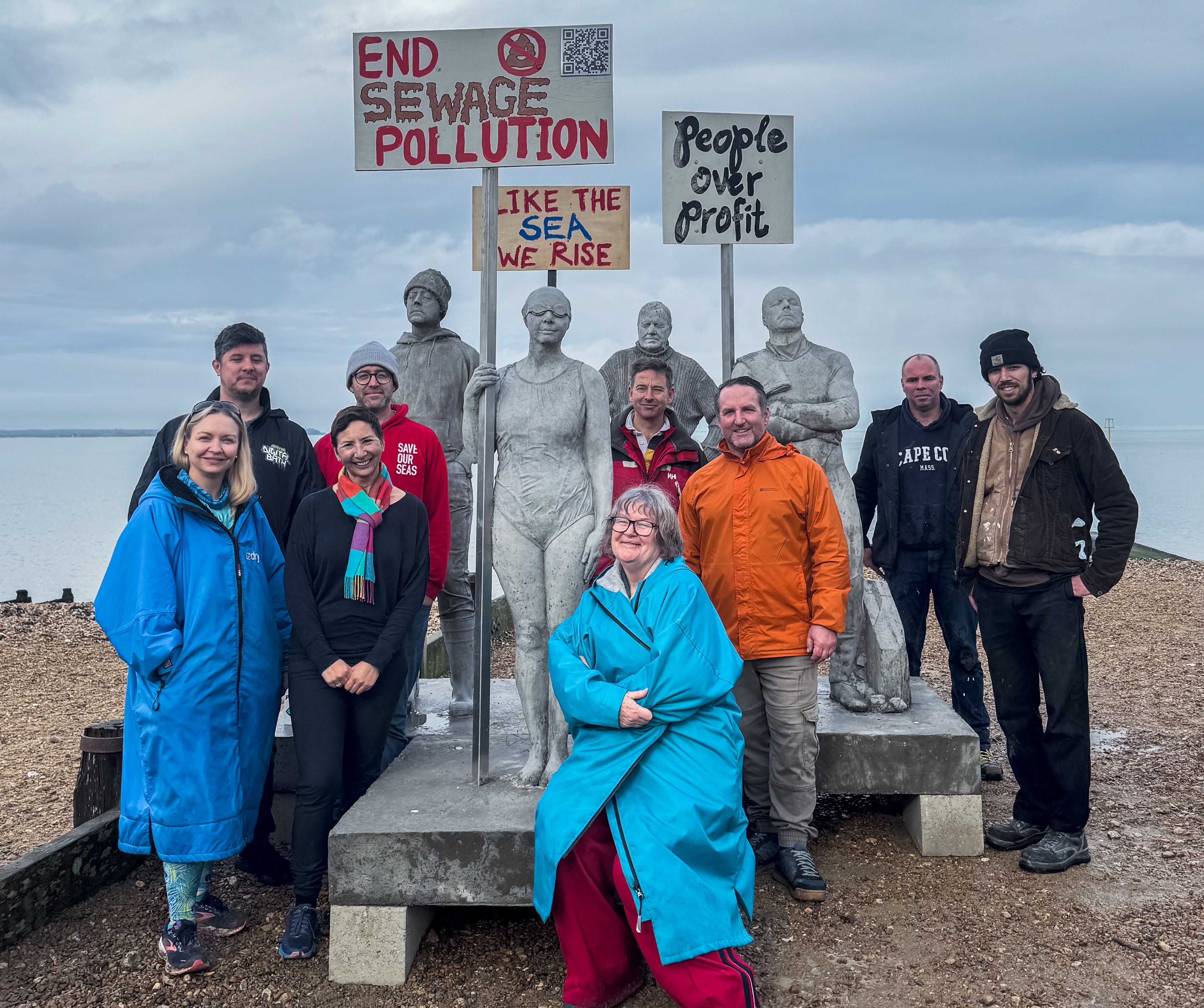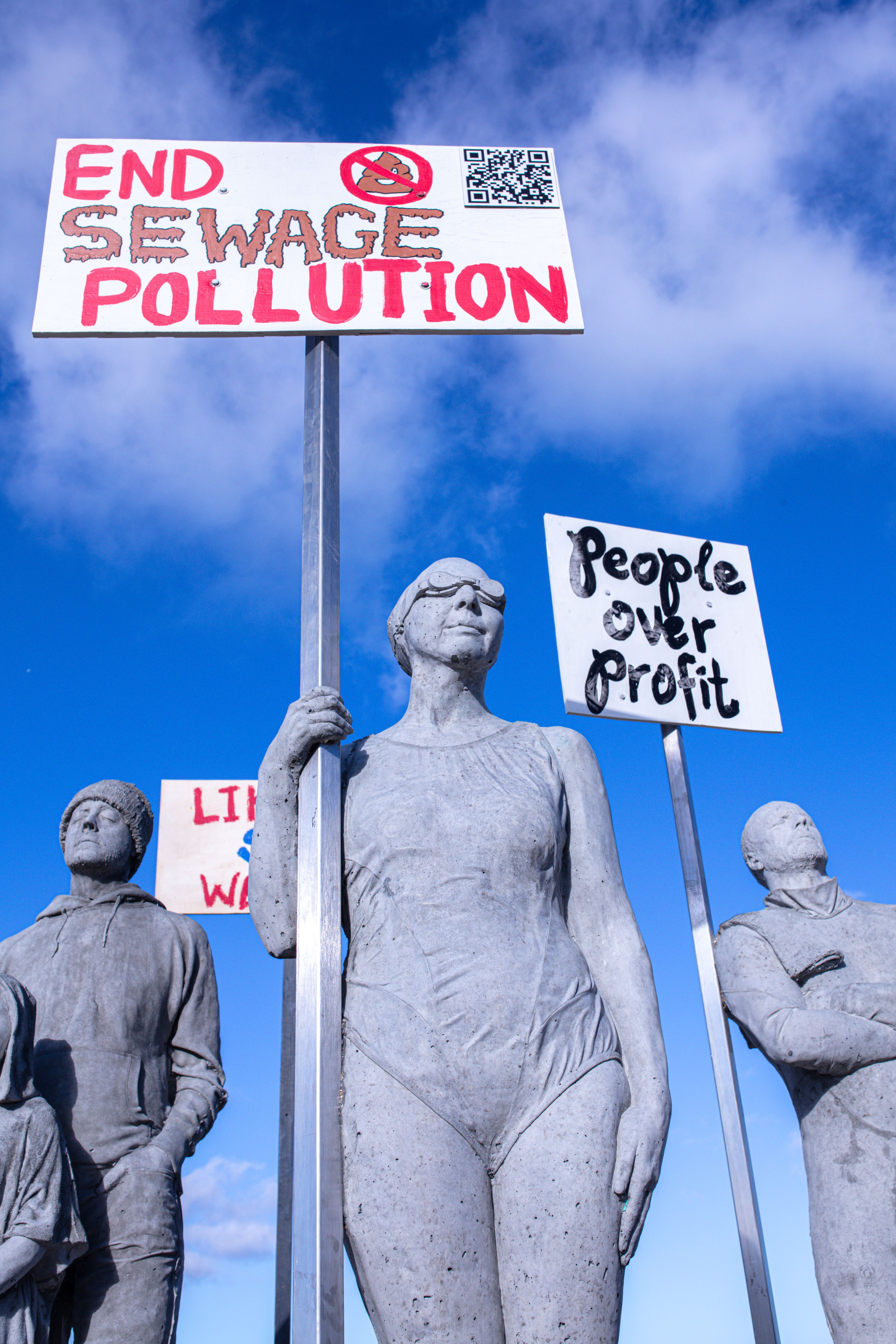

Jason deCaires Taylor is a sculptor, environmentalist, professional underwater photographer and a 2023 Bertha Artivist.
He creates dynamic sculptural installations that explore themes of conservation and environmental activism. His Artivism Awards project ‘Sirens of Sewage’ is a direct response to the prolific sewage pollution of our waterways and seas carried out by water companies across the UK.
We sat down with Jason and Rose (one of the models of this installation) to learn more about his process, the journey and the impact so far.
Combating this issue was extremely local to Jason: “I live in the south of England and the water supplier, Southern Water, has an awful record of discharging sewage directly into the sea. I am a sea lover and frequently take my kids to the beach, but I live next to a sewage treatment plant, so the impact is really prevalent in my everyday life."
"We’ve been aware of sewage pollution for quite some time in this region of the UK, and it was reaching a tipping point where the topic was entering the mainstream media. It was a huge concern across the whole public space and I thought the timing was ideal to start shouting about it. I contacted members of SOS Whitstable who are directly campaigning against this issue and the project started from there.”
The first time Jason was sent the application for the Bertha Artivism Awards he didn’t apply. “I was waiting for the right project to come along. Some of my works are monumental and take a few years to create, whilst others are community driven and so when this project around sewage pollution came along I thought it would be a really good one for the application. I wanted to find something that was achievable but gave a voice to this problem that was quite insidious and out of sight.”
The sculptures are lifecasts, portraying a small cross-section of the local Whitstable community, including members of SOS Whitstable. “We looked at lots of different models to help convey the message. At first I was very keen on targeting particular politicians or water company bosses. It was prior to the UK government elections, so I thought it was important to try and highlight the issue and hold some of those people responsible and accountable for it.
I then thought I may need to take a more non-partisan approach and try to represent the wider community. The thing with being too specific, it dates very quickly. As people move posts and situations change, the whole thing becomes more and more irrelevant. I wanted it to have an element of positivity about it, which I believe provokes change quicker than negativity, and is harder to marginalize.”
Once Jason had settled on an idea he began to approach potential models, “because we were not creating many characters within the final piece, I really wanted a particular cross-section of genders, ages and professions. Included are a school child, a protester, a fisherman, a kitesurfer and a swimmer, all of which have an active relationship with their coastline and with their seas and oceans.”
When the sculptures were complete next up was installation: “I’m used to moving hundreds of tons of sculptures and installing them in very difficult locations, working with territories overseas, with varying bureaucratic systems and permits so I have seen it all. I approached this project thinking it was going to be really straightforward, but actually we did have quite a few setbacks and it was quite difficult.
We got in touch with the local council early on and explained what the project was about. They were broadly supportive and even suggested potential installation locations. Unfortunately, at the last minute the council refused the permission needed to install the works in the desired location, which was quite a big upset because A. everything was designed specifically for a semi submerged harsh tidal marine environment and B. the other permitting processes would take over a year and be very costly to apply for and that would have caused the project to fall outside of the timescale of the Bertha Artivism Award.”

Jason began searching for an alternative site and found The Neptune, a pub that has a concession for the beach in front of it, who were willing to host the works. In February 2024 the sculptures were installed in their temporary home. “We had some incredible reporting on it, including features on the UK’s BBC, ITV and Channel 4, PBS in the USA, and major German news television features. The SOS Whitstable protesters found it quite hard to keep up with their normal daily lives and talking to the media by taking part in all the interviews situated by the sculptures on the beach. The level of exposure was fantastic.”
“One of the nicest things has been the fact that the sculptures were in a public place where there are huge numbers of passers by and a lot of people using the pub, which is quite famous in the region. I received a lot of feedback from people who had just accidentally come across works. It wasn’t just from the local community either, we could see via clicks on the QR codes that tourists from all around the world also visited the site, which was quite interesting to see where the new audiences came from.”
“We are in a new era now; it's not just about awareness anymore, as everybody is aware. I think we are over aware of everything. We are saturated with so much negative outlook and I think it can instil a sense of futility in people, that it’s not worth trying anymore or that you’re helpless. That is a very dangerous situation to be in and actually if a person can fuel motivation, if you can make people feel and show them there is a solution out there, people are much more likely to act.”
Rose, a volunteer with SOS Whitstable and one of the models for the sculpture, shared on her experience with Jason and this project:
"SOS Whitstable had been invited to Jason’s studio to be part of a roundtable discussion about sewage pollution and how it affects communities. Following that, Jason approached us with his idea and asked if we would like to get involved. And of course we said yes because his work is incredible.
Everything Jason stands for, his art, his beliefs, his values, they aligned with ours and we were honoured to be involved.
To see people's reactions as they found the Sirens, the pictures that were posted, it was such an amazing response. The thing is, you never know which way it's going to go when you do something like that, but we haven’t had anything bad said about them at all, it felt like the town and the community got behind the message and really engaged with it… It was such a strong visual message, a permanent reminder of the issue we have been fighting – we’re volunteers so we can’t always dedicate every minute of every day to fighting the cause but the sculptures stood there and did that for us for quite a few months. And it really put the message across, people stopped and looked and understood the issue.
This has been one of the biggest things for us this year. And in such a dignified and beautiful way as well, the relationship between art and activism, you know there's something special there, people take notice of it more than shouting. It was a special way to put the message out."













 Built with Shorthand
Built with Shorthand